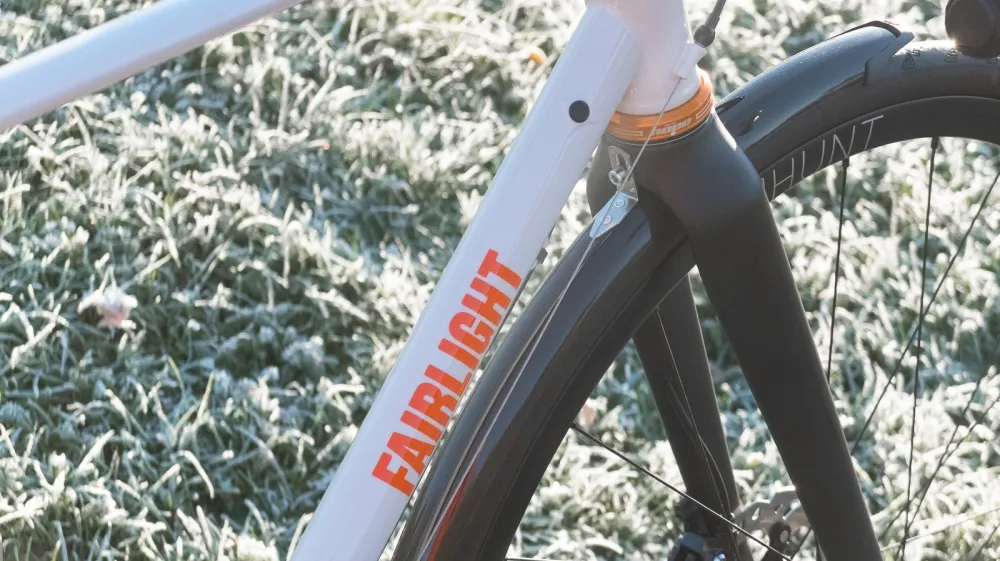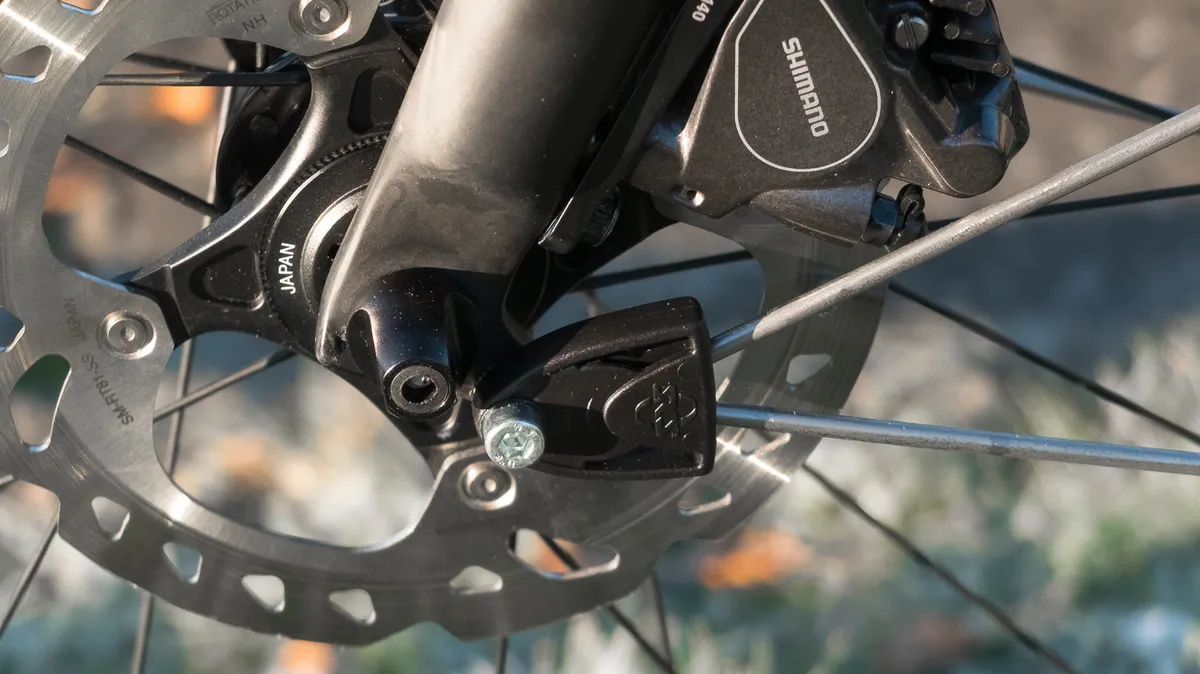New kid on the block Fairlight Cycles recently sent us through its all-season, mile muncher — the Fairlight Strael — and I’ve spent the last few days ogling the jazzy paint job and classy lines of the steel machine.

As we recently reported, Fairlight was co-founded by Dom Thomas and Jon Reid, and the brand recently launched its first two bikes: the Strael and Faran.
Thomas is no newcomer to the industry however, having previously worked as a designer at Genesis — bringing us the classic Volare.
We’ve found little fault in the Volare, but Thomas says that the Strael “is without doubt the best road bike I have ever designed”.
Fairlight Strael frame design
When it comes to steel road bikes, very few manufacturers set out with the intention of making an explicitly lightweight bike. Most are primarily interested in the resilience, smooth ride and classy looks that a steel frame affords.
The top tube has also been shaped, squishing the already skinny 25.4mm tube into a 20x30mm oval tube
While these are certainly qualities that the Strael possesses on paper, the low weight of the frame is what truly stands out. At 1,910g for a 56cm frame, this appears to be the lightest production steel road disc frame out there.
That word, production, is key here. While it is possible to produce a considerably lighter steel frame, it almost certainly wouldn’t pass ISO fatigue testing and Thomas reckons this is as light as anyone can go before real compromises have to be made.
The level of fettling that Fairlight has gone to to bring the weight of the Strael down, while creating a bike that doesn’t ride like a wet noodle, is quite remarkable.
Starting up front, the front triangle of the Strael is constructed from Reynolds 853, which barring the oh-so-shiny stainless 953, is the British tubing manufacturer's flagship tubeset.
The already posh, triple butted tubing has not escaped Thomas’ mechanical manipulations and the downtube has been shaped into a bi-oval profile. In layman's terms, this means the tube is ovalized at either end, but in opposite planes to each-other, maximising stiffness around the bottom bracket while maintaining front end compliance around the headtube.
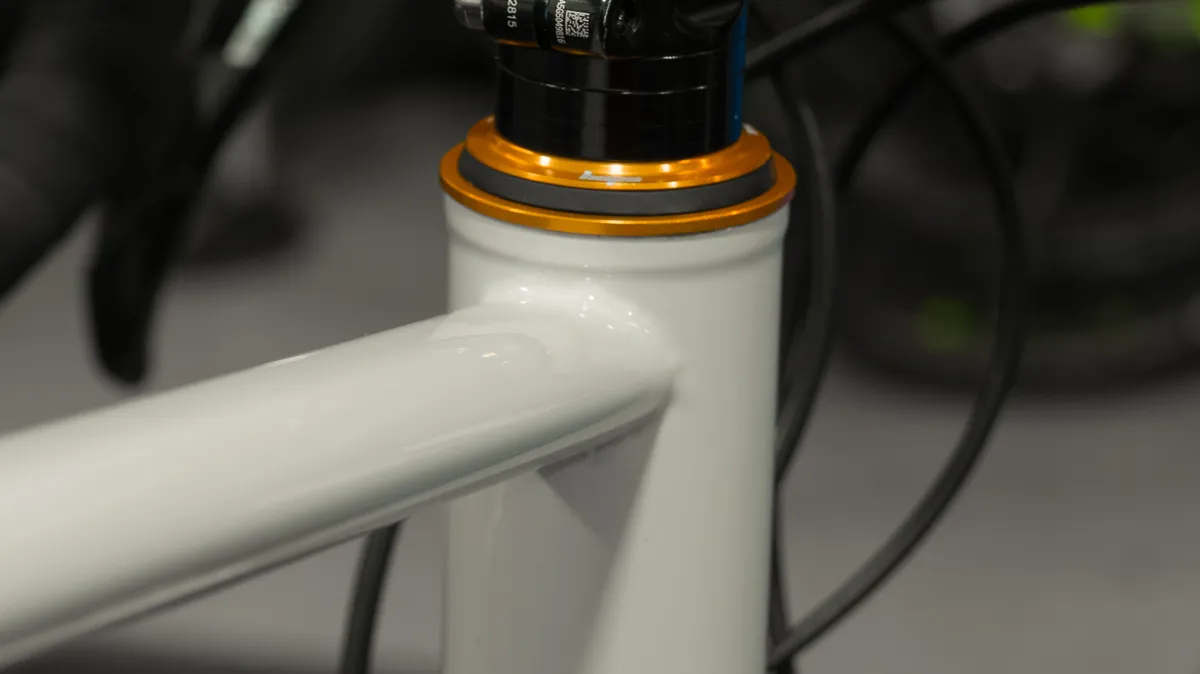
The top tube has also been shaped, squishing the already skinny 25.4mm tube into a 20x30mm oval tube which, as we bike testers love to say, aims to improve lateral stiffness while improving vertical compliance.
If you look closely you’ll also notice that the profile of the chainstays is far skinnier than is common for a steel bike — Fairlight has specced round, 22mm chainstays rather than the more common 27x17mm oval profiled ones. This is said to improve comfort and drops a little bit of weight from the bike in the process.
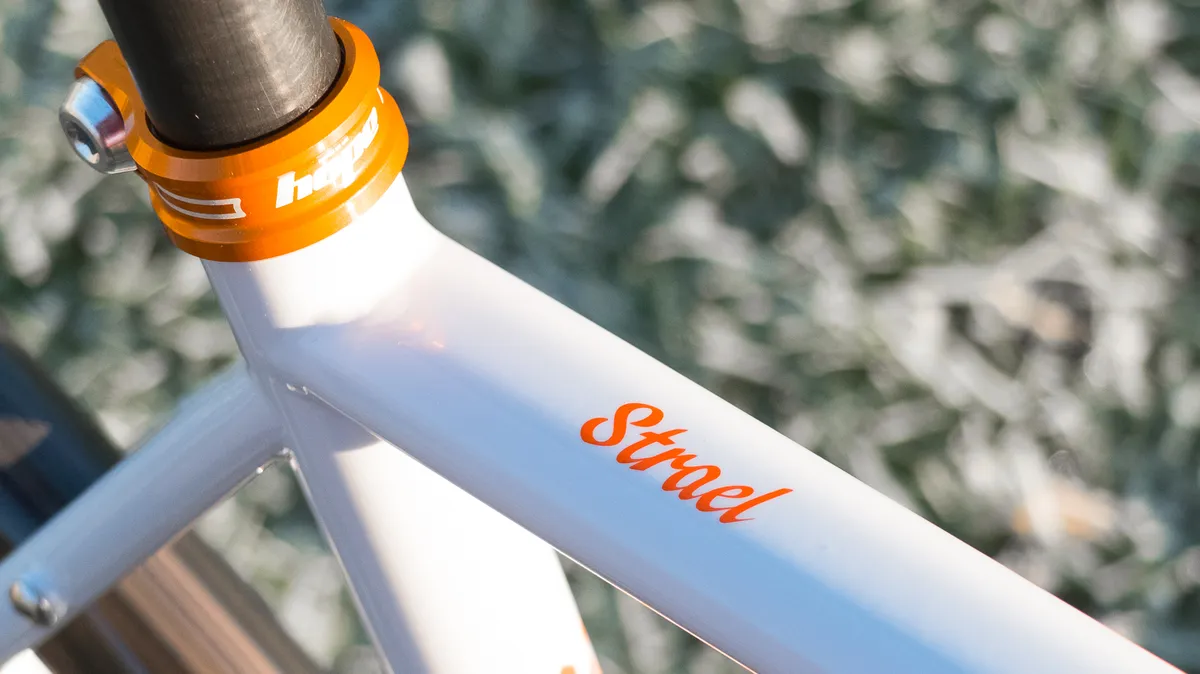
The result of these efforts brings the weight of our Ultegra equipped Strael, with mudguards and the Hope finishing kit upgrade, to a respectable 9.67kg.
Thomas describes the design process behind the Strael in extensive detail on the Fairlight website and I would encourage you to have a look through the article as it makes for very interesting reading.
Fairlight Strael wheel set up
I’m a fan of arriving at my destination with an untarnished, dry bum and I specced my test bike with full cover, SKS mudguards.


As you would hope with an all-season road bike, the Strael accommodates mudguards with ease, with sensibly placed bosses throughout and plenty of clearance around the chainstay bridge — no bodging or faffing required here.
Given how much thought has gone into the design of the frame, it should come as no real surprise that the fork is also custom-made to Fairlight’s specifications
The bike is officially designed to take 30mm tyres with guards or a 32mm knobbly tyre without, but as always these numbers are pretty conservative due to the clearance requirements of CEN bike testing standards, so you'll probably be able to fit something a little more plump in there should you so desire.
The bike is equipped with 28mm Continental Gatorskin tyres, which in my experience have a ride quality that is a little wooden for my tastes. This is primarily due to the stiff sidewalls of the tyres.
While this characteristic makes the hardy tyres a great choice for everyday riding across debris strewn winter roads, I have a feeling I’ll end up opting for something a little more plush during the fairer months to further enhance the comfort and control of the bike.
Having said that, the 17mm wide (internal) profile of the Hunt 4season wheels gives the tyres a nice rounded profile, which should go some way to improving comfort and control. The wheels are also tubeless compatible.
Fairlight Strael fork

Given how much thought has gone into the design of the frame, it should come as no real surprise that the fork is also custom-made to Fairlight’s specifications.
As Thomas states on the Fairlight website, “many brands resort to offering carbon cyclocross forks, approx. 400mm axle to crown, on all season road bikes to ensure (good) clearances, but such a long fork messes up the geometry on smaller sizes.”

Given that ensuring every customer has a perfectly fitted bike is one of Fairlight’s key values, Thomas considered speccing a readily available ‘cross fork to be an unacceptable compromise and the Strael’s custom fork has a much more roadie-like axle to crown length of 381mm.
Rather uniquely, the fork also incorporates an integrated dynamo lamp mount on the front face of the crown. Although this may seem like a spurious addition, dynamo lamps are very popular in long distance cycling circles and a dedicated mount helps to keep things low and clean.
Beauty school QR dropout
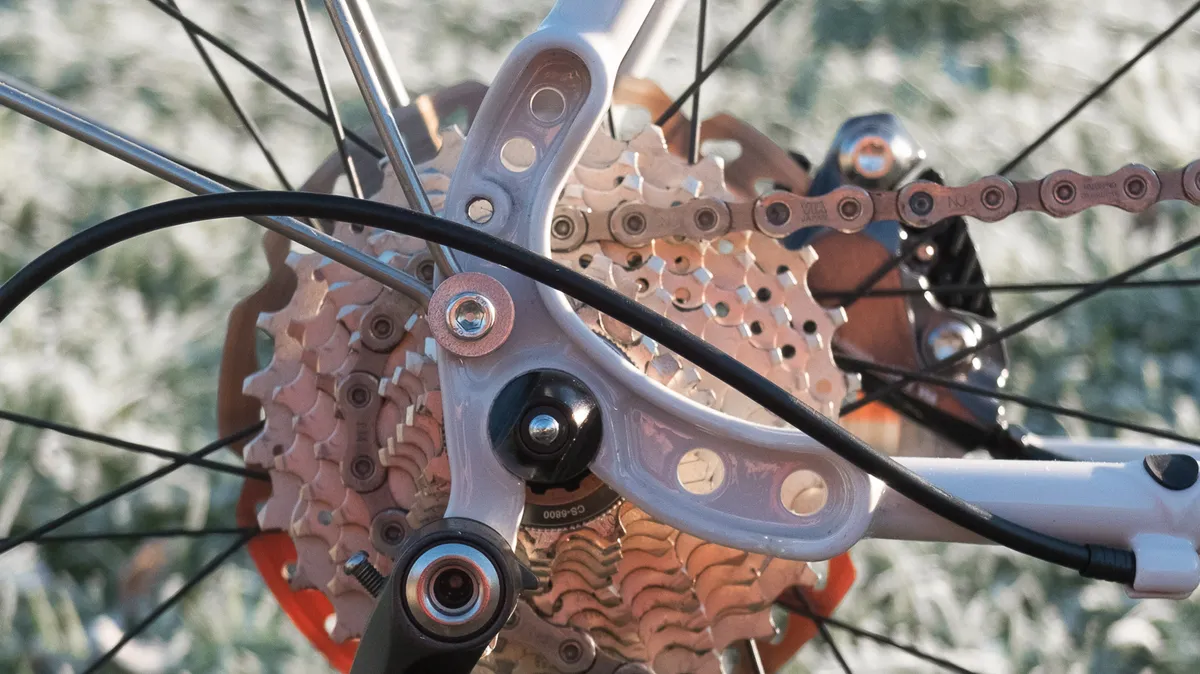
As you would expect of any modern, disc-equipped road bike, the Strael utilises flat mounts at both ends. As well as being future proofed, the smaller profile of the flat mount standard caliper means that mudguard stays don’t have to make an awkward bend around a bulkier, IS/Post-mount standard brake.

Out back, the investment cast dropout tucks the caliper out of the way inside the rear triangle, further aiding mudguard and rack friendliness.
While some will bemoan the lack of a thru-axles on the bike, this is a reasoned decision — after extensive testing of prototype versions of the Strael, with both quick release (QR) and thru-axles, Thomas came to the conclusion that the chunky, investment cast, QR dropouts were more than stiff enough and that speccing thru-axles would simply add unnecessary weight to the bike.
While I like the consistent disc placement that thru-axles afford, I appreciate Thomas’ honesty and have survived QRs on other bikes so far.
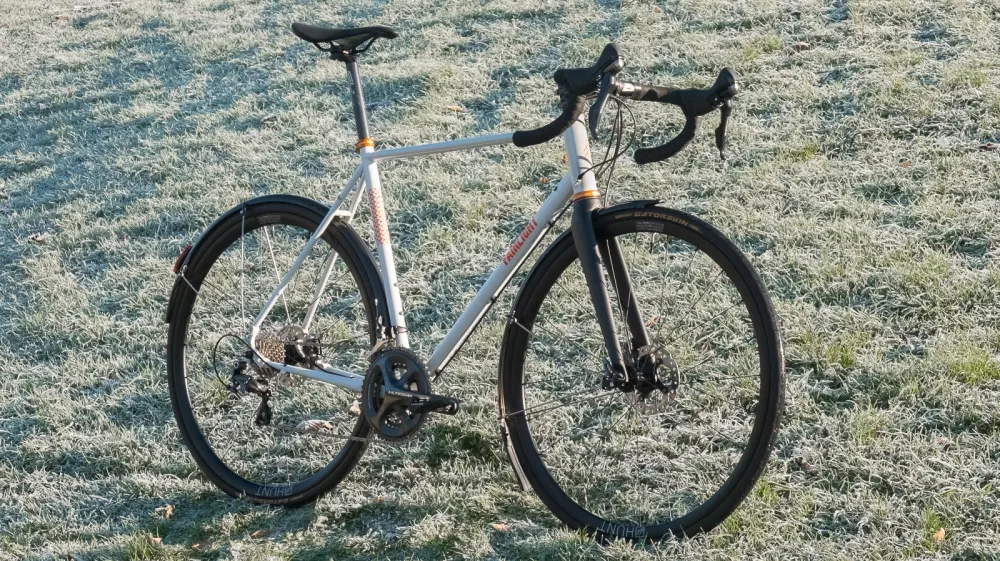
Although I’m quickly tiring of the frozen eyebrows and brittle toes that winter riding in the UK inevitably entails, I’m hoping that the all-season capabilities of the Strael should make the next few months that little bit more bearable. Keep your eyes peeled for a full review in the near future.
